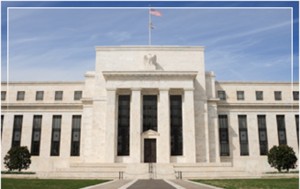WASHINGTON (MarketWatch) — The Federal Reserve is considering a rule that would tighten up liquid asset requirements for U.S. financial institutions, a move that could shift banks’ buying behavior.
The Board of Governors of the Federal Reserve plans to vote Thursday on a proposal that derives from a complex international agreement by the Basel Committee on Banking Supervision. That agreement proposes a liquidity coverage ratio, according to a Fed spokesman.

The Fed will vote Thursday in Washington on a rule to introduce quantitative liquidity requirements in U.S. financial institutions. Source: federalreserve.gov
Part of the Basel III financial reforms, the liquidity coverage ratio measures a bank’s cash on hand and also dictates that they must possess enough high-quality liquid assets – easily convertible to cash – to withstand short-term economic duress, such as what was experienced during the 2008 credit crisis.
“Everyone agrees that there must be a better safeguard in place for the banking sector to bring it back to its primary function as a credit intermediary for the public and less of a vehicle for financial speculation,” said Adolfo Laurenti, deputy chief economist at Mesirow Financial in Chicago.
Liquid assets like money-market securities generate relatively low returns, so competition may increase for riskier, higher return-yielding assets, according to Laurenti. “It’s a very delicate balance to strike,” he said.
The liquid coverage ratio is measured by dividing the stock of high-quality liquid assets by the bank’s cash outflow over 30 calendar days.
Mark Calabria, director of financial regulation studies at the Cato Institute, said the Fed’s discussion could provide clarification on a slew of unknowns. These include the relative weight and total number of assets that companies are required to have on balance sheets, which institutions the rules will impact and how long companies will have to carry out new guidelines.
The stricter asset requirements are driven by a “rear view mirror of the financial crisis,” Calabria said of the international push to safeguard against another credit crunch.
Timing of the Fed’s discussion, Calabria said, is also appropriate in light of its tapering off of bond buying.
“The LCR that comes into play nudges banks to buy Treasurys at the same time the Fed will slow its buying. It is not coincidental,” Calabria said.
While details of the Federal Reserve’s proposal are not known, experts said that the Fed will implement liquidity guidelines that encourage a more standard regulatory process.
“What we will see is that the Fed will try to crack down on self-regulation and try to implement standards that can be applied in more objective way,” Laurenti said.
The liquid coverage ratio will be put in place gradually with an introduction in January 2015. But the minimum requirement will begin at 60%, rising in equal annual steps of 10 percentage points to reach 100% in January 2019, according to the Bank of International Settlements’ website.
